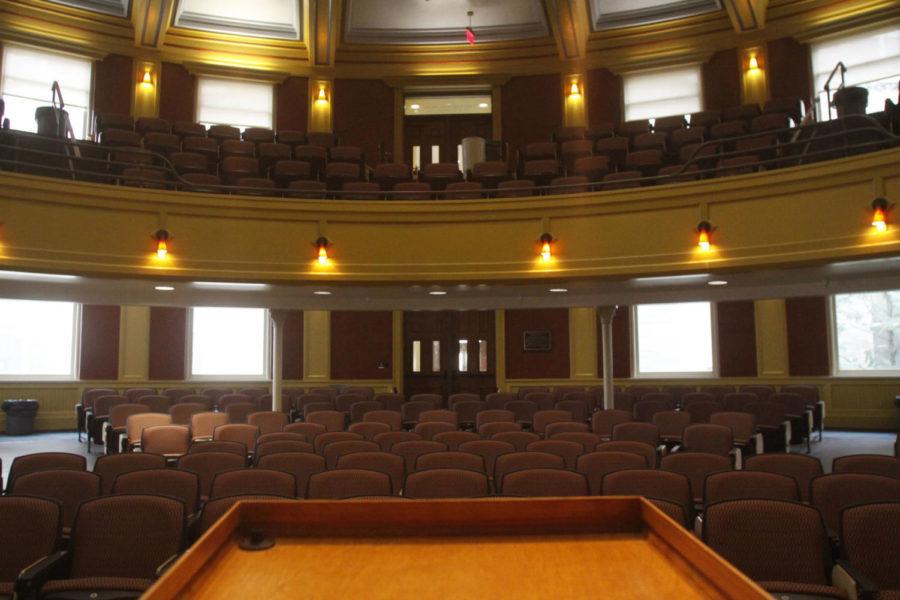Bader: Class structure is wearing on students
Tiffany Herring/Iowa State Daily
classroom structure archaic 2014
January 16, 2014
The first month of any semester is exciting and seems to fly by because you have new classes, new professors and new students to meet. Inevitably though, the semester starts to drag on after the first month because you realize that this semester is going to be no different than your entire previous school career. Wake up, go to class, listen to a professor lecture for an hour and repeat. Everyday. All year.
This is how the classroom structure has always been, and we’ve all grown used to it. The professor talks, students (ideally) listen and take extensive notes. Because of this, many of us may not even consider how it could be different. However, it is not too far fetched to expect that given how advanced our society is, that we can’t come up with a more efficient, or at least less mentally and life draining system.
What makes this problem worse is that, compared to high school, students are paying much more money for this inefficient system while in college. I often find myself sitting in class wondering why I’m going thousands of dollars in debt for the privilege of sitting in a classroom and not only having a professor lecture at me for an hour, but also assign a chapter of reading every class. I don’t need to pay a university in order to read books. Additionally, I can often get the gist of a lecture through the PowerPoint of the presentation posted online, so the lecture itself loses its value.
Class time is a very unique opportunity that our system squanders through lectures. If you want to learn about a subject on your own, it’s more difficult because you have no one with which to discuss ideas. This is the unique opportunity that class time provides. For one hour, two to three times per week, everyone trying to learn school subject “X” gathers in a room to try and advance their knowledge of “X.” Our system should encourage discussion between students during every single class. Lectures may be simple to prepare and easily applicable to various school subjects, but they don’t they provide the best form of learning for the majority of students.
Discussion exists in classes now, but it’s often a mediocre attempt at best. The participation methods either aren’t in-depth enough, or they aren’t consistent enough. Consistent participation and discussion is what will force students to put forth a genuine effort rather than the bare minimum.
One method professors employ is calling on students to answer simple questions about last night’s reading. Alternatively, a handful of times throughout the year, the class will meet in small groups and discuss a handout. Maybe there will be one group project at the end of the semester. The reason these are all ineffective is that many students have figured out that they can get through these events without much effort and not be forced to participate too heavily.
In this way, students are somewhat responsible in that they don’t make the effort to reach out to other students or to participate in class as often as they could. However, the responsibility falls on the university to encourage this type of behavior by creating a classroom structure that primarily focuses on collaboration and participation rather than silently listening. Humans are social beings. Discussion should be an integral part of class, not just an occasional activity.
There are many ways to feasibly alter this system without overhauling it. A complete overhaul may be ideal in the long run, but for now, we must think in baby steps. One small step may take the form of the university requiring that all classes contain at least ten minutes of small group discussions. Another solution may require a group quiz every week. Whatever the solution is, the focus must be student to student interaction.
Hopefully in the future, classes will not rely heavily on lectures. Students may have more freedom in the classroom to pursue their own interests, and not necessarily be force fed information through a lecture. For now that idea is a fantasy, but it’s not impossible to achieve. Students can start working towards this future classroom now by making more of an effort to participate in class and pressuring their universities to develop a more stimulating classroom environment.

















